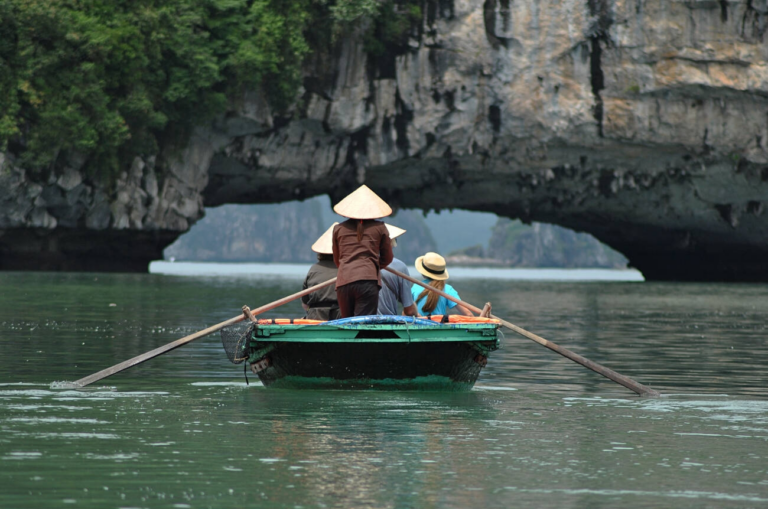
bike motorcycle
In recent years, South Korea has emerged as a premier destination for cycling tourism, thanks to its well-developed cross-country bike paths and the unique National Bicycle Certification System. Spanning over 1,853 kilometers, these interconnected cycling routes traverse rivers, mountains, coastal roads, and cultural landmarks all over Korea. What sets Korea’s bicycle paths apart is not only their scenic beauty but also the stamp tour system, which allows cyclists to collect stamps at designated checkpoints and earn official certificates and medals upon completion.
According to Eco-Counter, a company specializing in bicycle traffic analysis, approximately 1 million cyclists have used Korea’s bicycle routes since it was made . With well-maintained infrastructure, a fun gamified certification system, and eco-friendly design, these bike paths attract both locals and international travelers seeking a unique and sustainable way to explore Korea.
The Birth of Korea’s Cross-Country Bicycle Paths
Korea’s extensive bicycle network was developed as part of the Four Major Rivers Restoration Project, an initiative launched during the Lee Myung-bak administration. This project aimed to revitalize Korea’s major rivers—Han, Nakdong, Geum, and Yeongsan—while simultaneously transforming unused riverbanks into a nationwide cycling network. The goal was to promote eco-friendly transportation, boost local tourism, and provide a unique travel experience for cyclists.
Since its introduction in 2012, the system has expanded into 12 major interconnected routes, including:
- The Four Rivers Trail, covering Korea’s major waterways
- The East Coast Route, offering breathtaking ocean views
- The Jeju Fantasy Bicycle Path, encircling Korea’s most scenic island
- The Namhangang and Bukhangang Paths, which incorporate historic railway bridges and tunnels
How the Bicycle Stamp Tour Works
A defining feature of Korea’s bike paths is the stamp tour system, known as the National Bicycle Certification System. Introduced in 2012 by the Ministry of the Interior and Safety and the Ministry of Environment, this system allows cyclists to document their journey and receive official recognition.
Steps to Participate in the Stamp Tour:
- Purchase a certification booklet – Cyclists can buy a passport-like certification booklet at designated locations or order it online.
- Collect stamps at certification booths – Unmanned and manned certification centers are placed at key locations along each route, allowing cyclists to stamp their booklets as proof of travel. Each stamp is uniquely designed to reflect the local culture, landmarks, or history of the region, making the stamp-collecting experience even more engaging and regionally distinctive. This enhances the adventure, as cyclists not only earn certification but also collect meaningful keepsakes from each region they visit.
- Complete a route and claim rewards – After collecting all required stamps for a specific course, cyclists can visit a staffed certification center to receive an official medal and certificate.
The available certifications include:
- Sectional Certification (individual routes)
- Four Major Rivers Certification
- Cross-Country Certification
- Grand Slam Certification (completion of all major routes)
A total of 85 unmanned certification booths, designed to resemble red vintage telephone booths, are installed across the country. These iconic booths make the certification process convenient and fun, ensuring that cyclists can stamp their booklets at any time. The thrill of collecting stamps—often called the ‘stamp-breaking challenge’—adds excitement and makes long-distance cycling even more rewarding.
An Eco-Friendly Cycling Model
One of the most remarkable aspects of Korea’s bicycle paths is their commitment to sustainability. The project prioritized reusing existing infrastructure rather than creating new developments that could harm the environment. Several key eco-friendly initiatives include:
Recycling Old Infrastructure
- Low-traffic roads, village paths, and farm roads were repurposed for bike lanes, reducing construction costs and environmental impact.
- Abandoned railway bridges and train tracks were transformed into bike paths, saving demolition and disposal costs (e.g., Namhangang Bicycle Path).
- Disused small train stations, like Neungnae Station, were converted into rest areas and exhibition spaces.
Sustainable Management
- Old telephone booths were repurposed as unmanned certification booths, reducing waste and giving them a new purpose.
- Motion-sensor lighting systems were installed in tunnels, improving energy efficiency.
- Eco-friendly safety fences were built using thinned timber, which preserves forests by utilizing trees that would otherwise go to waste.
By prioritizing reuse and conservation, Korea’s bicycle network demonstrates how sustainable tourism infrastructure can be developed without harming nature.
A Journey of Challenges, Growth, and Friendship
While Korea’s bicycle paths are well-developed, not every section is perfect. Some areas are under construction, requiring detours or even cycling through work zones. These unexpected obstacles make the journey even more adventurous, requiring cyclists to adapt by checking maps, seeking alternative routes, or even relying on fellow riders for guidance. Navigating these challenges adds to the thrill and unpredictability of the experience.
But beyond the physical challenge, completing a cross-country cycling journey is a life lesson. It requires determination, patience, and endurance—qualities that extend far beyond the road. Many cyclists describe it as a transformative experience, a test of mental strength, and a chance for self-discovery.
When traveling as a team with friends, the experience becomes even more meaningful. Sharing struggles, laughter, and accomplishments on the road deepens friendships in ways that ordinary travel cannot. Overcoming physical exhaustion together creates an unbreakable bond, making it one of the most rewarding group travel experiences possible.
Surprisingly, time flies while cycling. The immersive nature of the journey—the changing landscapes, the rhythm of pedaling, and the anticipation of reaching the next stamp booth—makes hours feel like minutes.
Korea’s cross-country bicycle network is more than just a cycling route—it’s a journey through history, culture, and nature, enhanced by an innovative certification system that makes the experience both memorable and rewarding. The use of recycled infrastructure and sustainable management makes it a model for eco-friendly tourism, proving that large-scale travel initiatives can benefit both people and the planet.
For foreign travelers seeking an active, immersive, and unique way to experience Korea, cycling through the country’s bike paths is an adventure not to be missed. I still remember the thrill of reaching my final stamp booth, my legs burning from exhaustion but my heart filled with a sense of accomplishment. The long rides, unexpected detours, and the camaraderie built along the way made every challenge worth it. Whether chasing stamps, overcoming obstacles, forging friendships, or discovering hidden landscapes, Korea’s bicycle routes offer a truly unforgettable journey on two wheels—one that stays with you long after the ride is over.
By: Michelle Yang
Write and Win: Participate in Creative writing Contest & International Essay Contest and win fabulous prizes.


